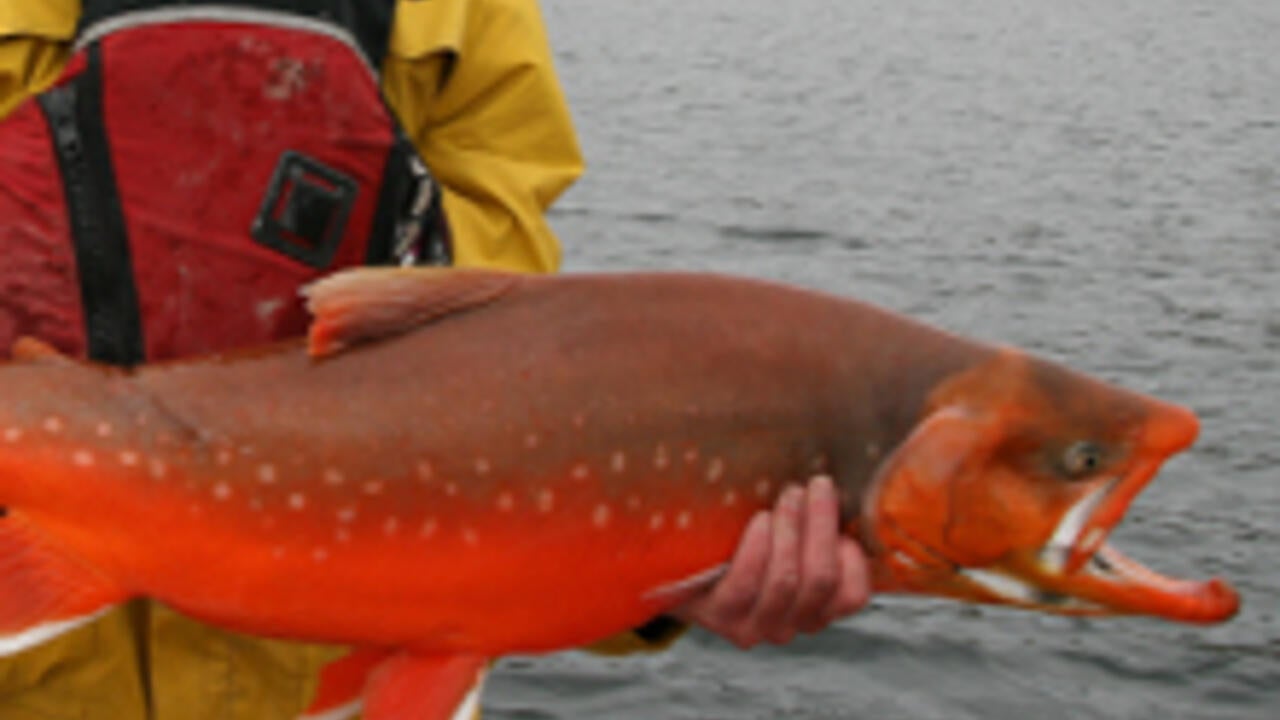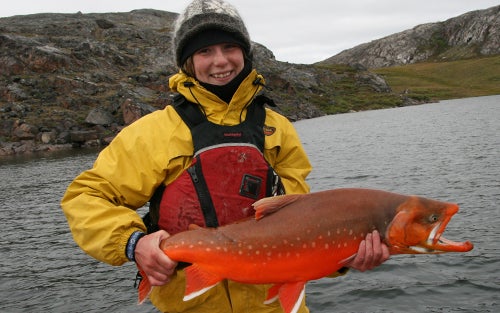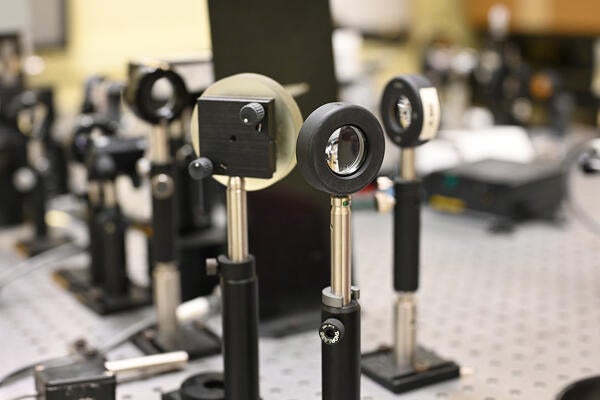
Fish stories: Tales from the ear bone
Waterloo biologist examines tiny fish ear bones for clues to mercury contamination and climate change

Waterloo biologist examines tiny fish ear bones for clues to mercury contamination and climate change
By Suzanne Bowness Marketing and Strategic CommunicationsFish ear bones are only a few millimetres in size but a University of Waterloo biologist is examining them for big answers to climate change and pollution.
Fish ear bones, or otoliths, set down annual growth rings that can be measured and counted like tree rings. They also function as “flight recorders,” containing information about where the fish lived, how fast it grew, and what water temperature it lived in.

“When you expose all the rings, you have a map of the fish’s life. Each concentric circle or ring contains a chemical history of the fish for that year, says Heidi Swanson, an assistant professor in the Department of Biology. “I use this chemical information to reconstruct fish movements or migrations; the temperature it experienced through its lifetime, and whether it was exposed to certain contaminants.
“We’re interested in finding out how the life history and growth rate of the fish is related to its mercury level, and how that might be affected by climate change,” says Swanson.
Lake trout that migrate to ocean have less mercury
As an example of the kind of revelation made possible by fish otoliths, Swanson says that researchers who studied lake trout were stunned to find out that some lake trout in the Arctic migrate to the ocean and back each year.
After identifying which fish migrated and which stayed put using the chemistry of their otoliths, Swanson compared their mercury levels and found the sea-going fish contain less mercury. She was able to pass this information on to policy makers who provide advice to subsistence fishers, many of whom are exposed to high mercury levels in the traditional foods they eat.
Since otoliths also reveal the history of temperatures that fish experience, Swanson is able to relate fish growth rates to temperature history, and then to mercury levels. Fish growth rates are an important determinant of mercury levels, and by understanding how temperature affects fish growth, scientists can better predict how climate change will affect fish growth and contaminant concentrations in the future.
While scientists have known about determining fish age with ear bones for a while, the chemical analysis, called ‘otolith microchemistry’ is newer, and becoming increasingly efficient and accurate with new laser technology. The University of Waterloo will soon have its own laser ablation lab in the Department of Earth Sciences. Swanson is looking forward to this, as she and her students currently have to complete their work in labs off campus.
“Otolith microchemistry work is painstaking and still not very automated, but the possibilities with new technology are really exciting. Since we have archived otolith collections going back to the 1950s, and some of the oldest fish have been known to live to 65+ years, there is a wealth of information locked in these samples that has yet to be discovered.
Like ice cores, otoliths are a proxy record for environmental conditions that help researchers piece together a historical record of the Arctic.”
Swanson and her team of graduate students continue to add to the collection of otoliths through annual field research trips to the Arctic, where they use float planes, helicopters, and ATVs to navigate the remote environment.
“We’re one of few labs at Waterloo where everyone has to have a firearms license, bear training, and wilderness first aid,” she laughs. “This year, we’re conducting projects in the Far North of Ontario, the Northwest Territories, and Alaska – it’s going to be a whirlwind field season.

Read more
12 Waterloo students and postdoctoral fellows receive up to $10,000 in funding to develop their green-tech solutions

Read more
Waterloo co-op students earn opportunity to contribute to SickKids research

Read more
Non-invasive and accessible testing can detect symptoms of Alzheimer’s disease long before symptoms occur
The University of Waterloo acknowledges that much of our work takes place on the traditional territory of the Neutral, Anishinaabeg and Haudenosaunee peoples. Our main campus is situated on the Haldimand Tract, the land granted to the Six Nations that includes six miles on each side of the Grand River. Our active work toward reconciliation takes place across our campuses through research, learning, teaching, and community building, and is co-ordinated within the Office of Indigenous Relations.